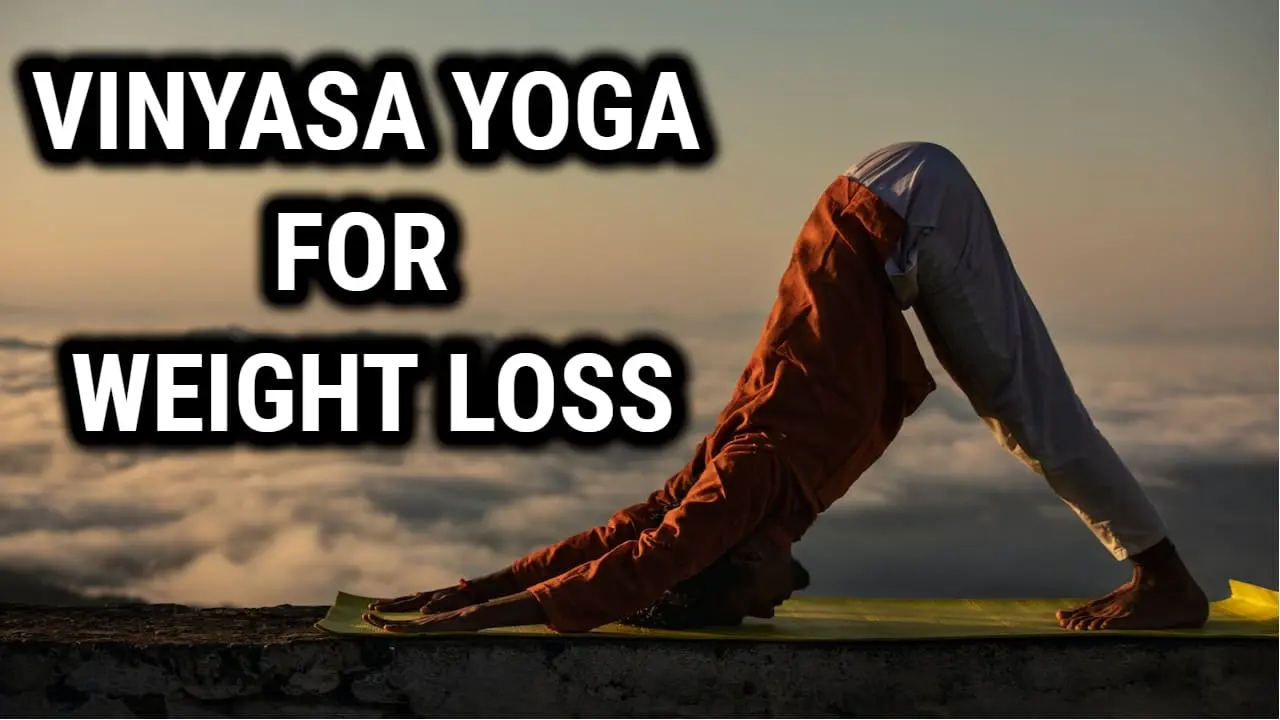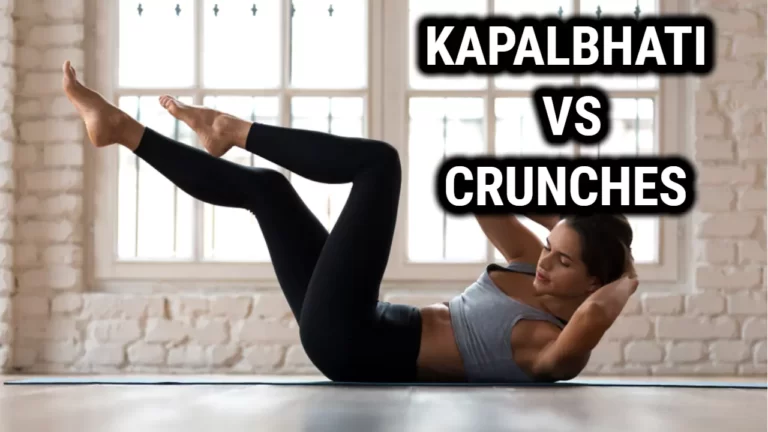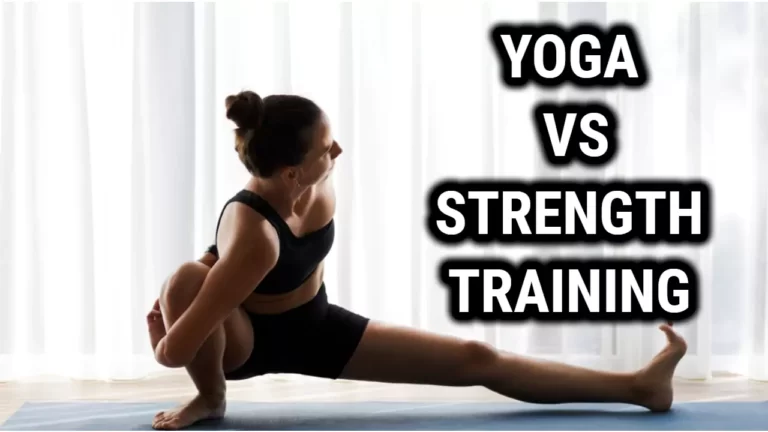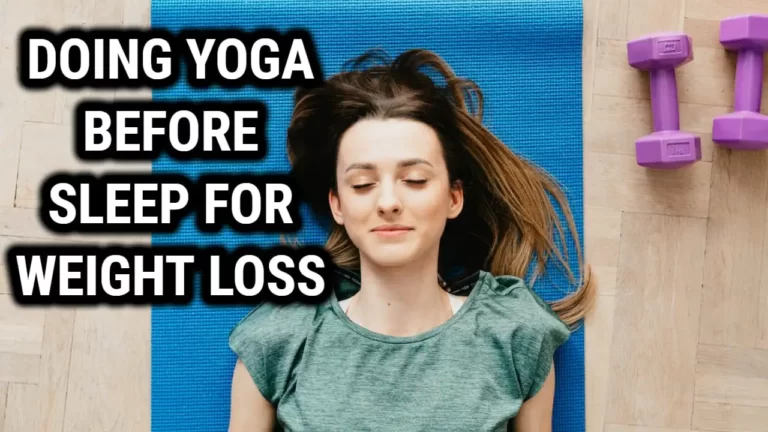Vinyasa Yoga For Weight Loss: Why To Incorporate It Into Your Routine

What is Vinyasa Yoga
Vinyasa yoga is a style of yoga that focuses on fluid, dynamic movements coordinated with the breath. This style of yoga is often described as a “flow” because of the way the poses seamlessly transition from one to the next. Vinyasa yoga is a popular form of yoga because it provides a challenging, full-body workout that can be tailored to the individual’s fitness level.
Benefits of Practicing Vinyasa yoga
Benefits of practicing vinyasa yoga include increased flexibility, strength, and endurance, as well as improved balance and coordination. Additionally, the focus on breath control and mindfulness can help to reduce stress and improve overall mental wellbeing.
How Vinyasa Yoga can Help with Weight Loss
Vinyasa yoga can be a valuable tool for weight loss because it combines physical activity with mindfulness and breath control. Regular physical activity is essential for weight loss because it helps to increase metabolism, burn calories, and build lean muscle mass.
Vinyasa yoga, in particular, has a high calorie-burning potential because it involves continuous, dynamic movements that engage multiple muscle groups at once.
In adding to its health advantages, vinyasa yoga can also help with weight loss by reducing stress and improving overall mental health. Stress can lead to weight gain by triggering the release of hormones that cause the body to store fat, and by increasing cravings for unhealthy foods.
By helping to reduce stress, vinyasa yoga can help to prevent this weight gain and support weight loss efforts.
Furthermore, vinyasa yoga can help to improve metabolism, which can also support weight loss. The combination of physical activity and mindful breathing can help to boost the body’s natural fat-burning processes, making it easier to lose weight and keep it off.
How To Do Vinyasa Yoga
Here is a basic vinyasa yoga sequence:
- Start in mountain pose (Tadasana), with your feet together and your arms by your sides.
- Inhale and raise your arms overhead, stretching upward.
- Exhale and fold forward, bringing your hands to the floor or to your shins. This is the standing forward bend pose (Uttanasana).
- Inhale and step or jump back to plank pose.
- Exhale and lower your body down to the floor in the push-up position.
- Inhale and raise your upper body, coming into the cobra pose (Bhujangasana).
- Exhale and press back into downward-facing dog (Adho Mukha Svanasana).
- Inhale and step or jump forward to the standing forward bend.
- Exhale and raise back up to mountain pose.
Some of the common poses used in vinyasa yoga sequences include:
1. Tadasana (Mountain Pose) – A standing pose that helps to align the body and prepare for movement.
2. Utkatasana (Chair Pose) – A pose that strengthens the legs and core while stretching the shoulders and chest.
3. Chaturanga Dandasana (Four-Limbed Staff Pose) – A pose that strengthens the arms and shoulders while developing core stability.
4. Urdhva Mukha Svanasana (Upward-Facing Dog Pose) – A backbending pose that opens the chest and strengthens the arms, shoulders, and upper back.
5. Adho Mukha Svanasana (Downward-Facing Dog Pose) – A classic yoga pose that lengthens the spine and stretches the arms, shoulders, and legs.
6. Plank Pose – A strengthening pose that engages the core and arms.
7. Warrior I (Virabhadrasana I) – a pose that strengthens the legs, opens the hips, and builds balance.
8. Warrior II (Virabhadrasana II) – a pose that stretches the legs, hips, and chest while strengthening the arms.
9. Triangle Pose (Trikonasana) – a pose that strengthens the legs, stretches the hips and spine, and improves balance.
10. Savasana (Corpse Pose) – A relaxing and meditative pose that helps to calm the mind and release tension from the body after the practice.
Tips for Incorporating Vinyasa Yoga into a Weight Loss Routine
Finding a class or instructor:
If you are new to vinyasa yoga, it is a good idea to attend a class or work with a certified instructor to learn proper form and technique. This will ensure that you get the most out of your practice and reduce the risk of injury.
Starting with beginner-level classes:
Vinyasa yoga can be physically challenging, so it is important to start with classes that are appropriate for your fitness level. Beginner-level classes will introduce you to the basic poses and movements, and help you to build the strength and endurance needed to progress to more advanced classes.
Modifying poses as needed:
It is important to listen to your body and modify poses as needed to avoid injury and ensure that you are able to keep up with the class. Your instructor can help you with this, or you can try using props such as blocks or straps to make poses more accessible.
Incorporating other forms of physical activity:
Vinyasa yoga alone may not be enough to support significant weight loss, especially if you are already at a healthy weight. To maximize the benefits of your vinyasa practice, try incorporating other forms of physical activity such as walking, running, or cycling into your routine.
Set realistic goals:
Weight loss takes time and effort, so it is important to set realistic goals for yourself and be patient. Focus on making small, sustainable changes to your lifestyle and physical activity habits, and give yourself credit for the progress you make.
Eat a balanced diet:
In combination to consistent exercise, a healthy diet is essential for weight loss. Try to eat a balanced diet that includes a variety of fruits, vegetables, lean proteins, and whole grains, and limit your intake of processed foods, added sugars, and unhealthy fats. This will help to support your weight loss efforts and improve your overall health.
How Long Does It Take to Lose Weight with Vinyasa Yoga?
It is said it takes 2 to 3 weeks to see the results with regard to losing weight with vinyasa yoga, as this can vary depending on a number of factors such as your starting weight, fitness level, and the intensity of your practice but usually you will see the results in 2 to 3 weeks. Additionally, weight loss is not the only goal of vinyasa yoga, and the benefits of this practice extend beyond just weight loss.
However, with regular practice and a healthy, balanced lifestyle, vinyasa yoga can help to support weight loss efforts. By increasing physical activity and boosting metabolism, vinyasa yoga can help to burn calories and build lean muscle mass, which can lead to weight loss over time.
In general, it is recommended to aim for at least 150 minutes of moderate-intensity physical activity per week, which can be achieved through a combination of vinyasa yoga and other forms of exercise.
By gradually increasing the intensity and duration of your practice, you can continue to see improvements in your fitness and weight loss over time. It is important to remember that weight loss takes time and effort, and that it is important to be patient and consistent with your practice.
Potential Drawbacks And Precautions
While vinyasa yoga offers many benefits, there are also some potential drawbacks and precautions to consider. One of the most important things to keep in mind is the importance of listening to your body and not overdoing it.
Vinyasa yoga can be physically demanding, and it is important to avoid pushing yourself too hard or trying to do too much too soon.
Another potential drawback is the potential for injury if poses are not performed correctly. Vinyasa yoga involves a lot of movement and can put strain on the joints and muscles, so it is important to pay attention to proper form and technique.
Working with a certified instructor can help to reduce the risk of injury, but it is also important to listen to your body and stop if you feel any pain or discomfort.
Vinyasa yoga may not be suitable for everyone. People with certain medical conditions or physical limitations may need to modify poses or avoid certain movements, or may need to choose a different form of physical activity altogether.
If you have any concerns, it is always a good idea to consult with your healthcare provider before starting a vinyasa yoga practice.
Also Read: The Different Types Of Yoga And Their Benefits
Wrapping Up
Vinyasa yoga is a valuable tool for weight loss and overall health and wellbeing. By combining physical activity with mindful breath control, vinyasa yoga can help to boost metabolism, burn calories, and reduce stress, all of which can support weight loss efforts.
The focus on flexibility, strength, and coordination can help to improve overall physical fitness and wellbeing.
However, it is important to remember that vinyasa yoga should be approached with caution, and that it is not suitable for everyone. It is essential to listen to your body, start with beginner-level classes, and modify poses as needed to avoid injury and ensure that you get the most out of your practice.
By incorporating vinyasa yoga into a balanced, healthy lifestyle, you can support your weight loss goals and improve your overall health and well being.





